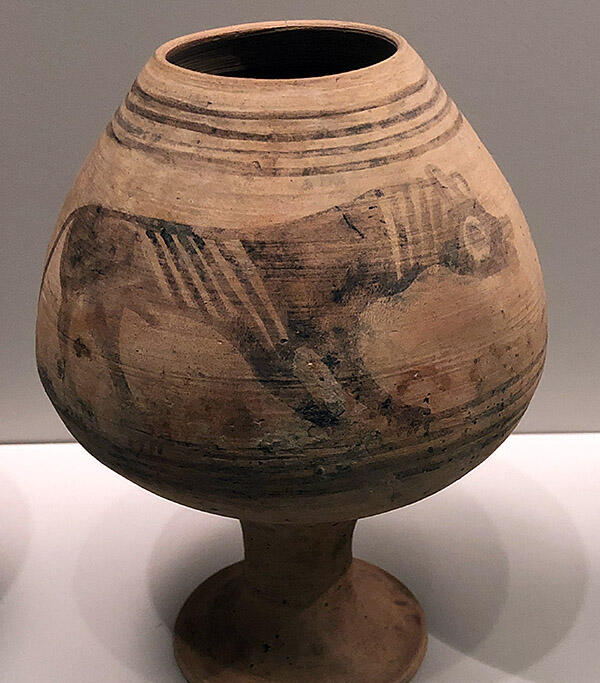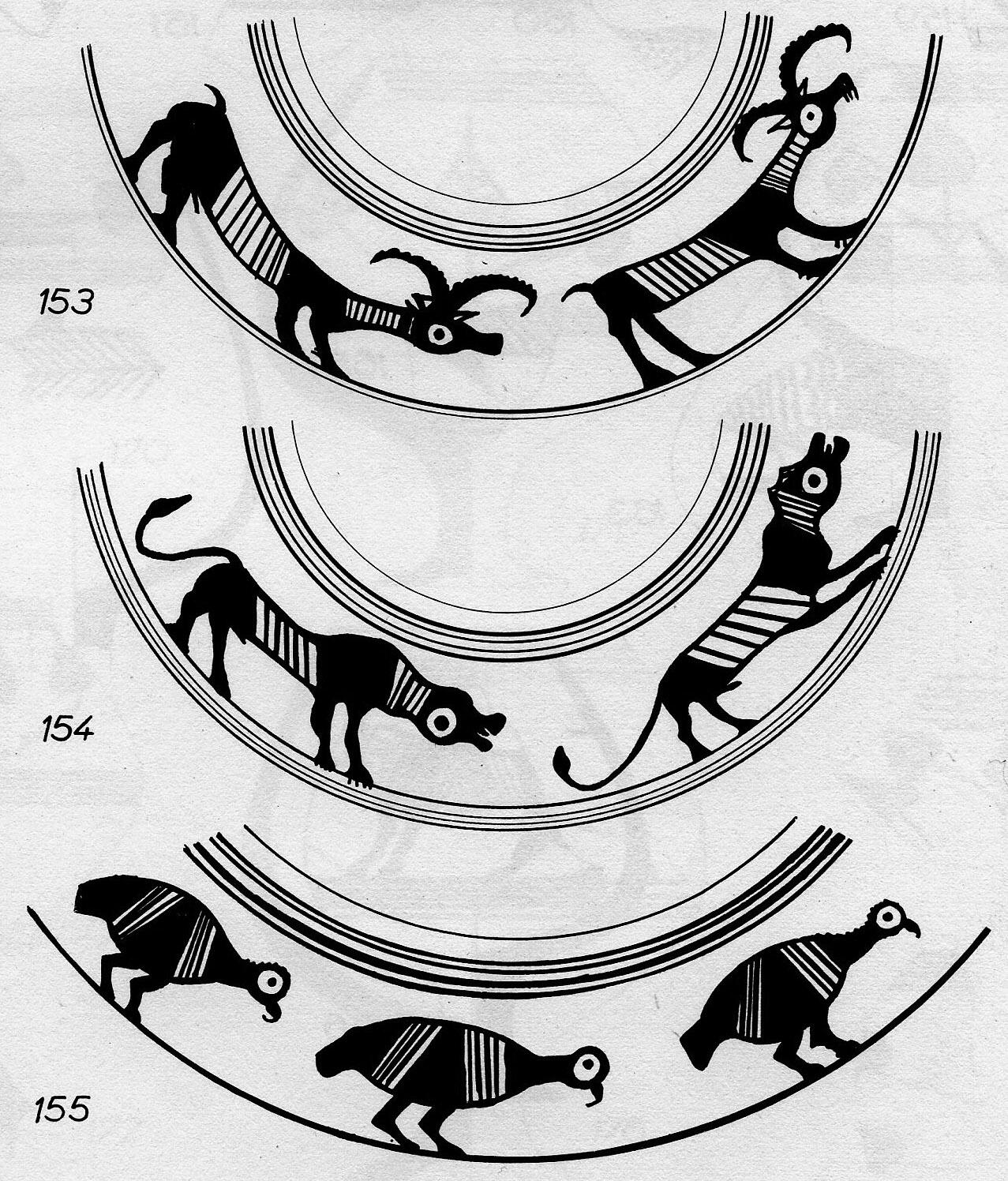"For analogies to the distinctive Kulli cattle we may turn northward to Mundigak," writes Sir Mortimer Wheeler in The Indus Civilization "where Period IV (succeeding the 'Quetta ware' of Period III) is marked by elongated animals (oxen, goats or ibexes, felines) and birds, all with the distinctive dot-in-circle eyes and hatched bodies, buth with the environing 'landscape' which occurs at Kulli. Some measure of affinity nevertheless seems sufficiently certain. Far in the opposite direction, in the sheikhdom of Abu Dhabi on the coast of the Oman peninsula, the Danes have excavated on the tiny island of Umm an-Nar tumuli representing circular multiple tombs of masonry containing pottery of which one vessel bears elongated bulls separated by geometric panels, a pattern which, it is claimed 'shows both in form and in style of decoration so great a resemblance' to Kulli ware that 'there appears to be no doubt' that it belongs to the same period. This resemblance, it now appears, must be regarded as very uncertain; but some evidence of trade across the Persian Gulf is provided by a grey-ware canister of distinctive Kulli form, with forward-tumbling caprids, horned heads and triangles, found by the Danes at Buraimi, in the interior of Oman." (1962, p. 17)
Image 2: Bottom portion of Figures Ceramic from Period IV [2750-2500 BCE] from Casal, Fouilles De Mundigak, Fig. 62, 1961.




